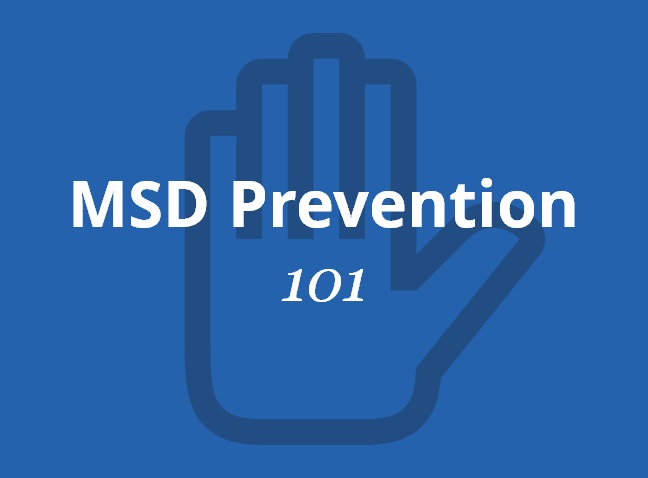In order to prevent something from happening, it’s a good idea to first understand what you’re up against. That is why a basic knowledge of common types of musculoskeletal disorders (MSD) is an important initial step to begin preventing them.
Last week, we defined MSD as, “…injuries and disorders that affect the human body’s movement or musculoskeletal system (i.e. muscles, tendons, ligaments, nerves, discs, blood vessels, etc.).” This blanket definition allows us to consider all risk factors involved and develop comprehensive strategies to reduce these risks.
Good health of the musculoskeletal system is maintained when there is a balance between fatigue from physical activity and the system’s recovery process.
MSDs result when exposure to physical activity causes gradual wear and tear, micro trauma, and soft tissue fatigue to outpace the system’s recovery, leading to inflammation, pain and dysfunction.
Some Common Musculoskeletal Disorders
Sprain – A sprain is an injury to a ligament (tissue that connects two or more bones at a joint). In a sprain, one or more ligaments is stretched or torn
Strain – A strain is an injury to a muscle or a tendon (tissue that connects muscle to bone). In a strain, a muscle or tendon is stretched or torn.
Tendinitis – Inflammation or irritation of a tendon (tissue that connects muscle to bone).
Arthritis – Painful inflammation and stiffness of the joints.
Carpal Tunnel – Irritation of the median nerve which causes tingling and numbness of the thumb, index, and the middle fingers.
Areas of the Body Affected By Musculoskeletal Disorders
Source: OSHA 3125
Source: Nonfatal Occupational Injuries and Illnesses Requiring Days Away From Work, 2010 (BLS)
Musculoskeletal Disorders are painful, costly and preventable. In the coming weeks, we will cover more on the problem of MSD in the workplace and provide a framework for effective workplace injury and MSD prevention.
Check out the rest of the MSD Prevention 101 series.



